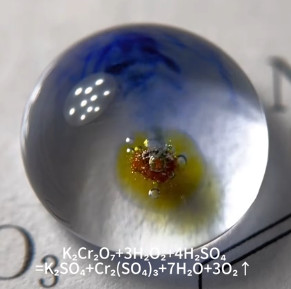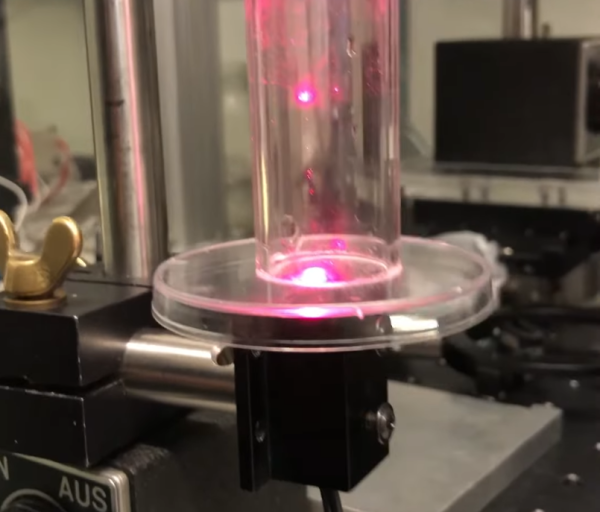If you’re like us and you’ve been wondering where those viral videos of single water drop chemical reactions are coming from, we may have an answer. [yu3375349136], a scientist from Guangdong, has been producing some high quality microchemistry videos that are worth a watch.
 While some polyglots out there won’t be phased, we appreciate the captioning for Western audiences using the elemental symbols we all know and love in addition to the Simplified Chinese. Reactions featured are typically colorful, but simple with a limited number of reagents. Being able to watch diffusion of the chemicals through the water drop and the results in the center when more than one chemical is used are mesmerizing.
While some polyglots out there won’t be phased, we appreciate the captioning for Western audiences using the elemental symbols we all know and love in addition to the Simplified Chinese. Reactions featured are typically colorful, but simple with a limited number of reagents. Being able to watch diffusion of the chemicals through the water drop and the results in the center when more than one chemical is used are mesmerizing.
We do wish there was a bit more substance to the presentation, and we’re aware not all readers will be thrilled to point their devices to Douyin (known outside of China as TikTok) to view them, but we have to admit some of the reactions are beautiful.
If you’re interested in other science-meets-art projects, how about thermal camera landscapes of Iceland, and given the comments on some of these videos, how do you tell if it’s AI or real anyway?


















